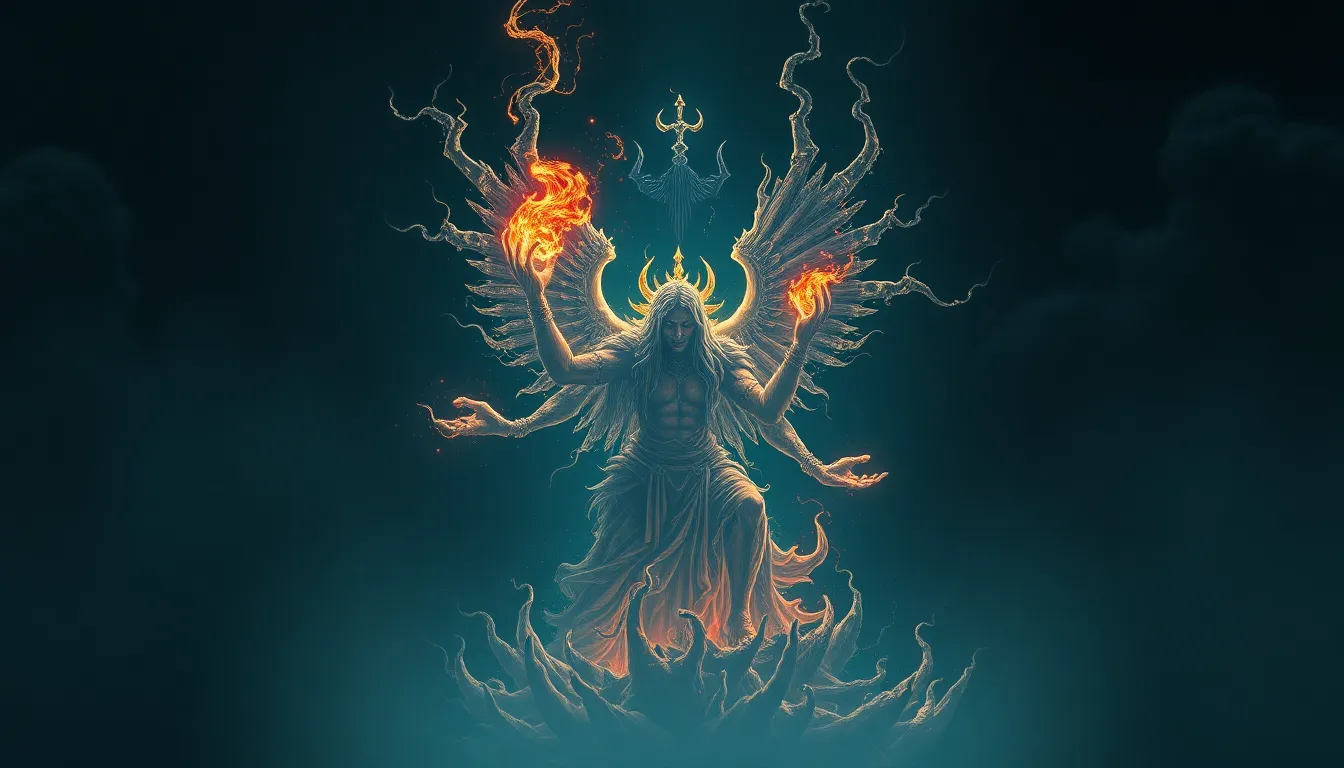Cursed by the Divine: The Most Notorious Punishments in Mythology
I. Introduction
Throughout ancient cultures, the notion of divine punishment has played a crucial role in shaping moral codes and societal values. In mythology, divine punishment refers to the retribution meted out by gods and goddesses to mortals for their sins, transgressions, or hubris. These narratives serve not only as cautionary tales but also as reflections of the cultures that created them.
The significance of punishment in mythological narratives lies in its ability to convey moral lessons and the consequences of one’s actions. Whether it is a tale of betrayal, defiance, or arrogance, the repercussions often serve as a reminder of the power of the divine and the importance of humility and respect. This article aims to explore notable examples of divine punishment across various mythologies, examining how these stories illuminate the concept of justice and the role of the deities as enforcers of moral order.
II. The Concept of Divine Justice
Divine justice varies significantly across different cultures, but it often embodies a universal theme: the balance between good and evil. Many mythologies depict the gods as guardians of moral order, punishing those who commit wrongs or violate sacred laws.
- Understanding divine justice in various cultures: In many traditions, the gods are seen as the ultimate arbiters of justice, and their punishments reflect the moral fabric of society.
- Moral lessons embedded in mythological punishments: These stories often serve to teach the importance of virtues such as honesty, humility, and respect for the divine.
- Role of gods and goddesses as enforcers of justice: Deities often take it upon themselves to enact punishment, serving as a warning to both mortals and other gods.
III. Greek Mythology: The Wrath of the Olympians
In Greek mythology, the Olympian gods wield immense power over mortals, often punishing those who dare to defy them. Key figures such as Zeus, Hera, and Hades exemplify the consequences of hubris and transgression.
A. Overview of notable figures: Zeus, Hera, and Hades
Zeus, the king of the gods, is known for his authority and often swift retribution. Hera, his wife, embodies jealousy and vindictiveness, while Hades rules the underworld, overseeing the fates of the deceased.
B. Specific cases:
- Prometheus and the gift of fire: Prometheus, a Titan, defied Zeus by stealing fire from the gods and giving it to humanity. As punishment, Zeus had him bound to a rock, where an eagle would eat his liver daily, only for it to regenerate each night.
- Sisyphus and his eternal punishment: Sisyphus, a cunning mortal, tricked death and escaped from the underworld. As punishment, he was condemned to roll a massive boulder up a hill, only for it to roll back down each time he neared the top.
C. The implications of hubris and defiance against the gods
These stories illustrate the dire consequences of hubris—excessive pride or defiance of the divine order. They serve as reminders that mortals must respect the gods and their authority.
IV. Norse Mythology: The Punishments of the Aesir
Norse mythology presents a complex view of fate and retribution, where the Aesir gods enforce justice in a world filled with chaos and prophecy.
A. The concept of fate and retribution in Norse beliefs
In Norse culture, the concept of fate, represented by the Norns, dictates the destinies of both gods and mortals, often intertwining justice with the inevitability of death and destruction.
B. Notable examples:
- Loki’s punishment for his misdeeds: After orchestrating the death of Baldr, the beloved god, Loki was captured and bound to a rock with the entrails of his son, while a serpent dripped venom onto his face, causing him immense suffering.
- Fenrir’s binding and the consequences of prophecy: Fenrir, the monstrous wolf, was prophesied to bring about great destruction during Ragnarok. To prevent this, the gods tricked him into being bound by a magical chain, a fate that reflected both fear and the necessity of control over chaos.
C. The connection between punishment and the cycle of Ragnarok
The punishments in Norse mythology often foreshadow Ragnarok, the end of the world, where the cycle of life, death, and rebirth is a central theme. The Aesir’s attempts to control fate through punishment ultimately reveal the futility of resisting destiny.
V. Egyptian Mythology: The Balance of Ma’at
In Egyptian mythology, the concept of Ma’at represents truth, balance, and cosmic order, and it is fundamental to understanding divine punishment.
A. The importance of Ma’at in maintaining order
The Egyptians believed that maintaining Ma’at was essential for the harmony of the universe. Violating this order invited the wrath of the gods, leading to severe punishments.
B. Notorious punishments:
- Osiris and the judgment of the dead: In the afterlife, Osiris judged the souls of the deceased, weighing their hearts against the feather of Ma’at. Those deemed unworthy faced dire consequences, often being devoured by the monstrous Ammit.
- Set’s eternal exile and the chaos he caused: Set, the god of chaos, was punished for his treachery against Osiris by being exiled, representing the necessary balance between order and chaos.
C. The concept of an afterlife and divine judgment
The Egyptian belief in the afterlife is intertwined with the concept of divine judgment, where the actions of the living affect their fate beyond death. This emphasis on moral behavior reflects the importance of Ma’at in everyday life.
VI. Hindu Mythology: Karma and Divine Retribution
Hindu mythology is deeply rooted in the principles of karma, where every action has consequences that can lead to divine punishment or reward in this life or the next.
A. The principle of karma and its relation to divine punishment
Karma governs the cycle of life, death, and rebirth (samsara), ensuring that individuals face the consequences of their actions, whether in the present or future lives.
B. Case studies:
- The curse of Draupadi: Draupadi, a central figure in the Mahabharata, was subjected to humiliation and insult, resulting in a curse that led to the destruction of her abusers during the great war of Kurukshetra.
- The fate of Ravana: Ravana, the demon king of Lanka, was punished for his arrogance and for abducting Sita. His defeat at the hands of Lord Rama not only served as retribution but also highlighted the triumph of good over evil.
C. The cyclical nature of life, death, and rebirth
The cyclical nature of existence in Hindu philosophy emphasizes that divine punishment is not merely retributive but also restorative, aiming to restore balance in the universe.
VII. Mesopotamian Myths: Ankh and the Deities of Fate
In Mesopotamian mythology, the Anunnaki, gods of fate, play a pivotal role in judgment and punishment, often reflecting the societal values of the time.
A. Understanding the role of the Anunnaki in judgment
The Anunnaki were believed to oversee human destiny, dispensing justice in accordance with the behavior and actions of individuals.
B. Distinctive punishments:
- Gilgamesh and the consequences of arrogance: The epic of Gilgamesh showcases the story of its hero, who, in his arrogance, seeks immortality. He learns that human limitations are a part of existence, and defiance against the gods leads to isolation and loss.
- The story of Enkidu and divine intervention: Enkidu, created to challenge Gilgamesh, ultimately becomes his friend. His death serves as a punishment for the duo’s defiance against the gods, leading Gilgamesh on a quest for understanding mortality.
C. The significance of fate and divine will
These stories reflect a profound understanding of fate, emphasizing that the gods’ will is paramount, and any attempt to




